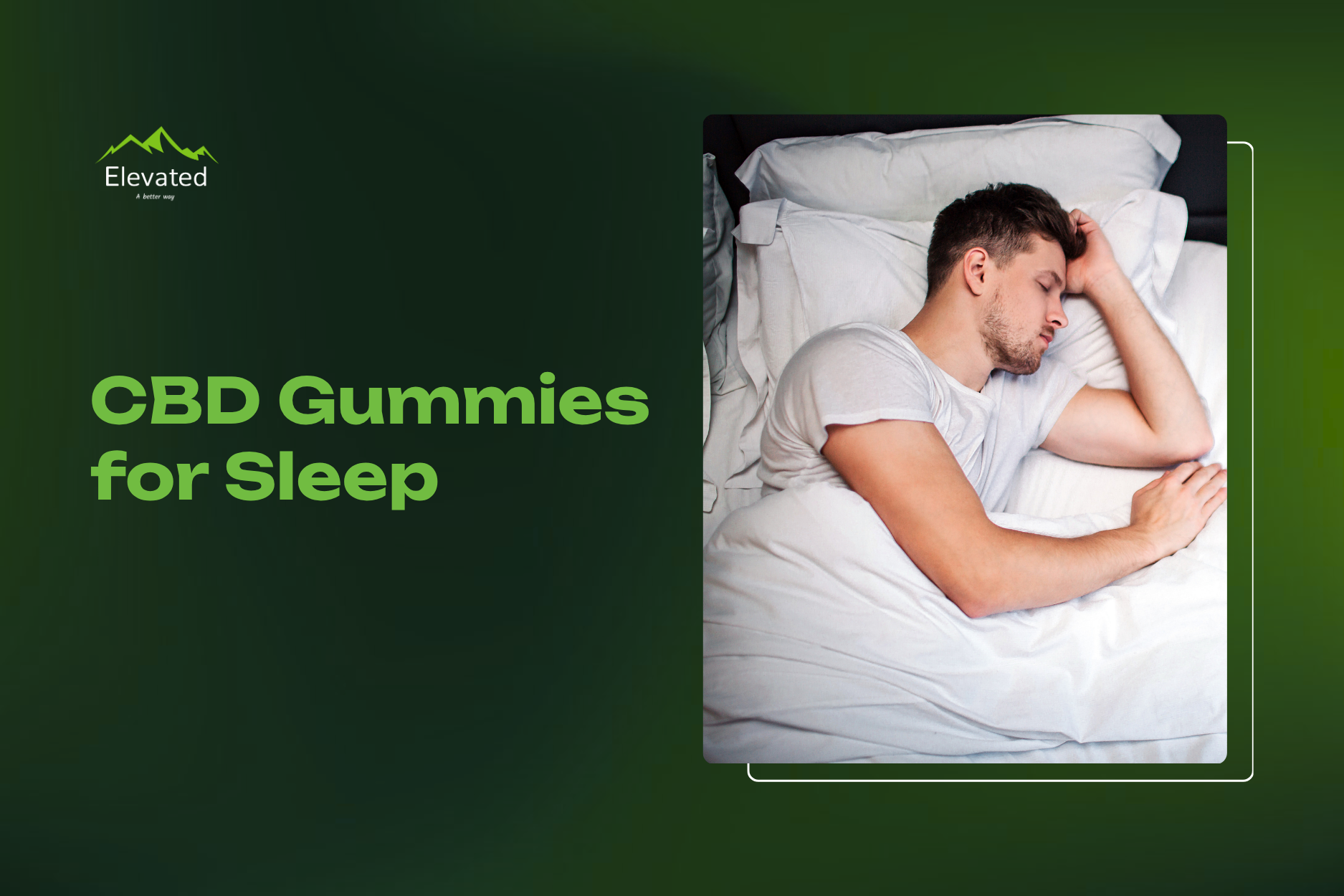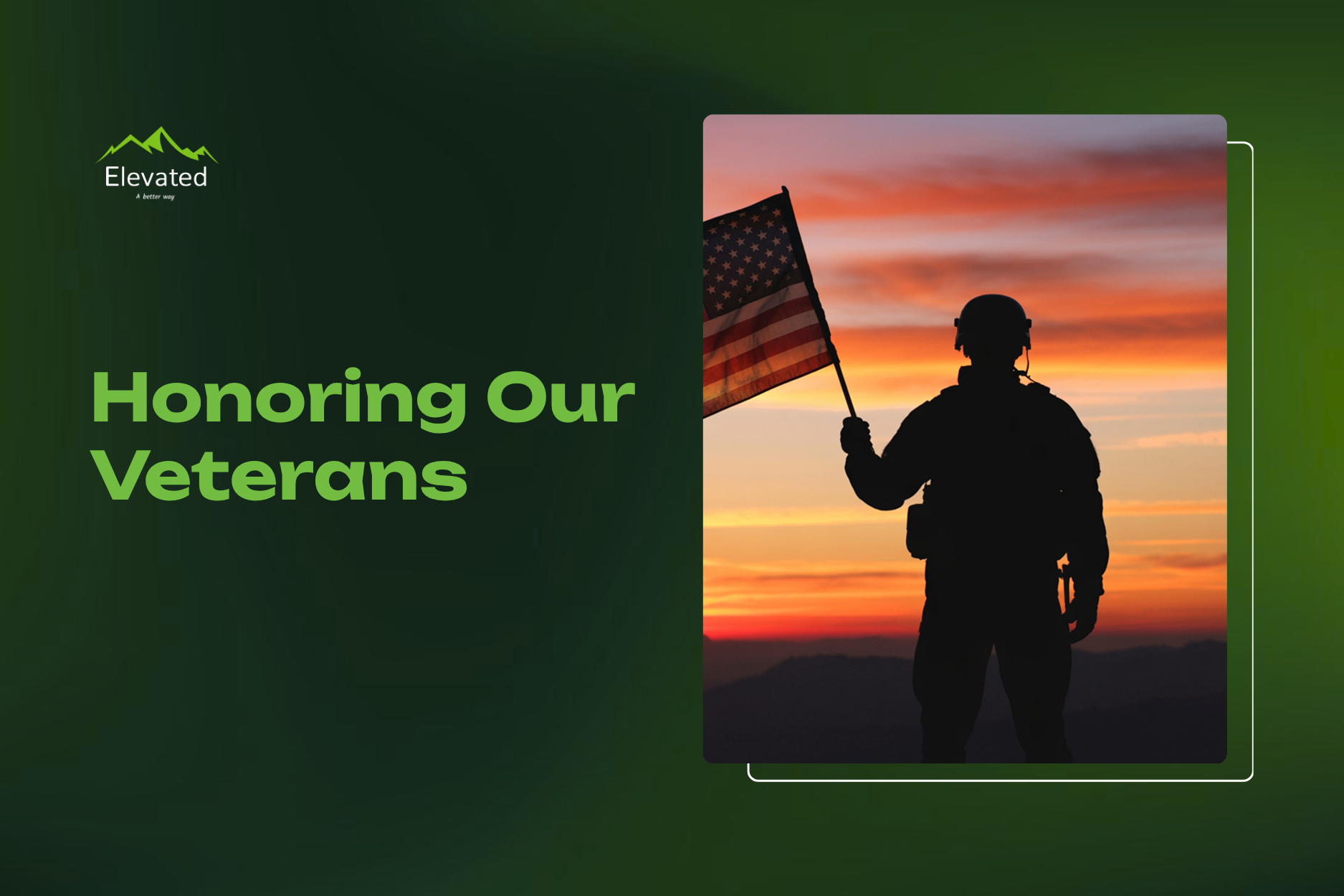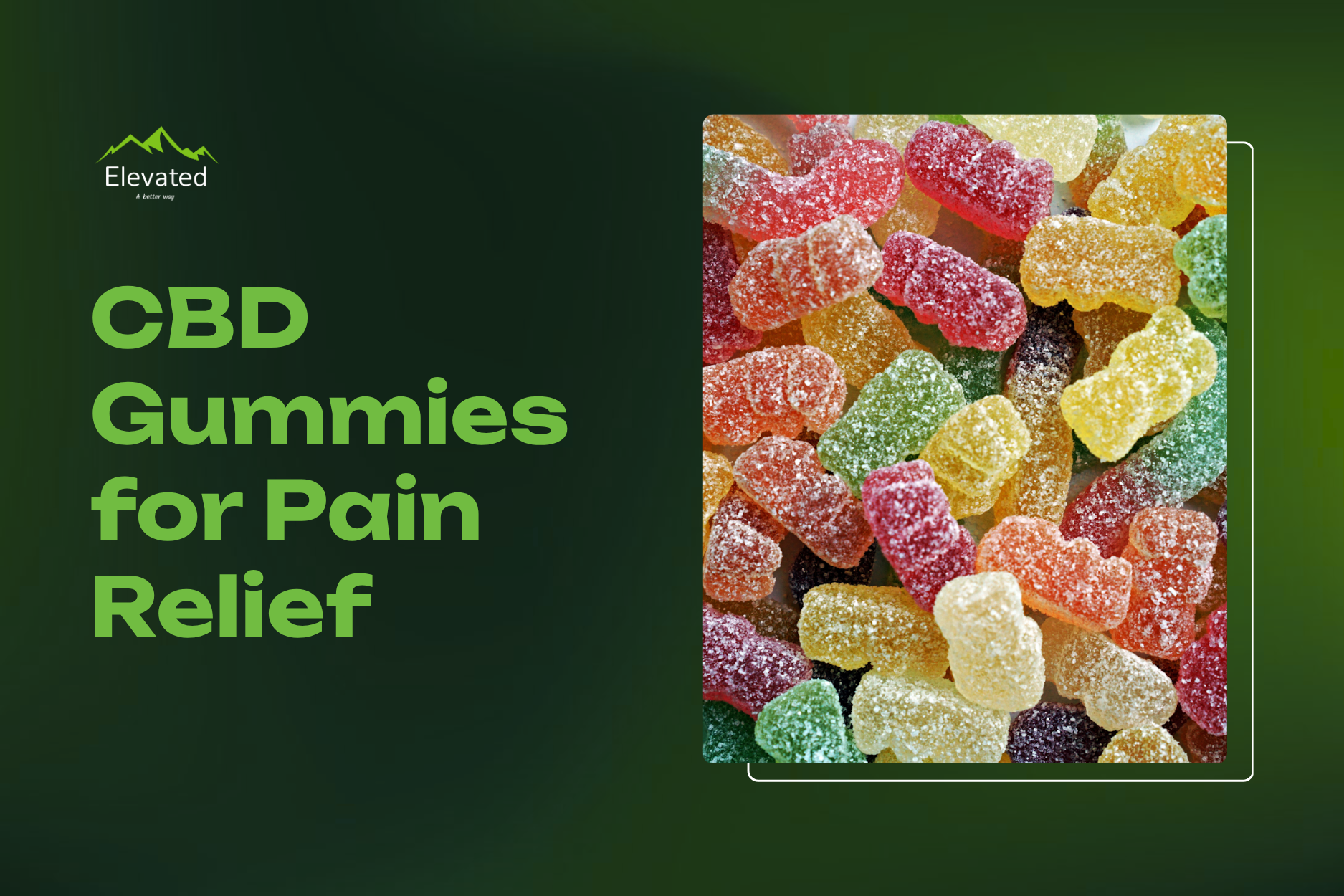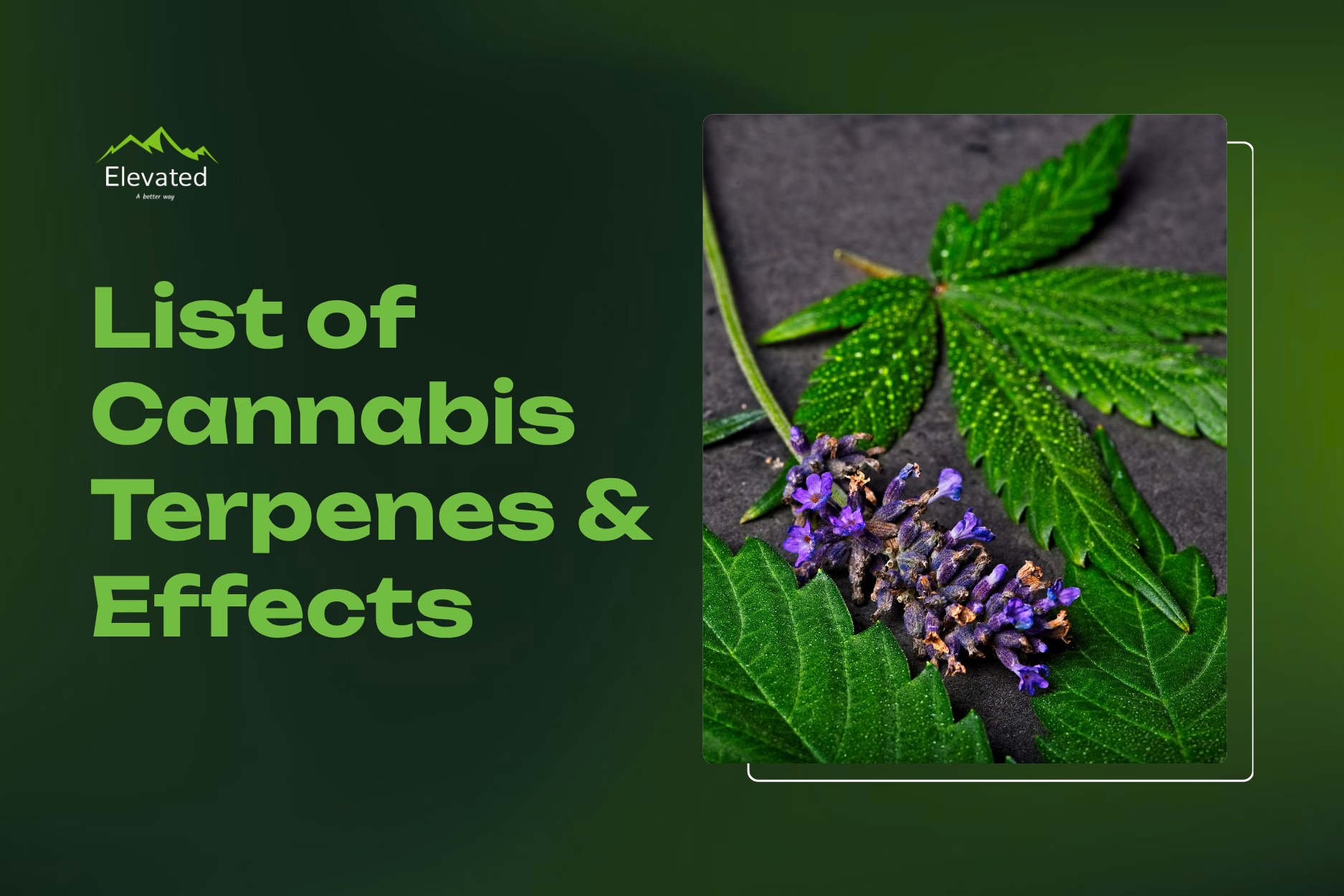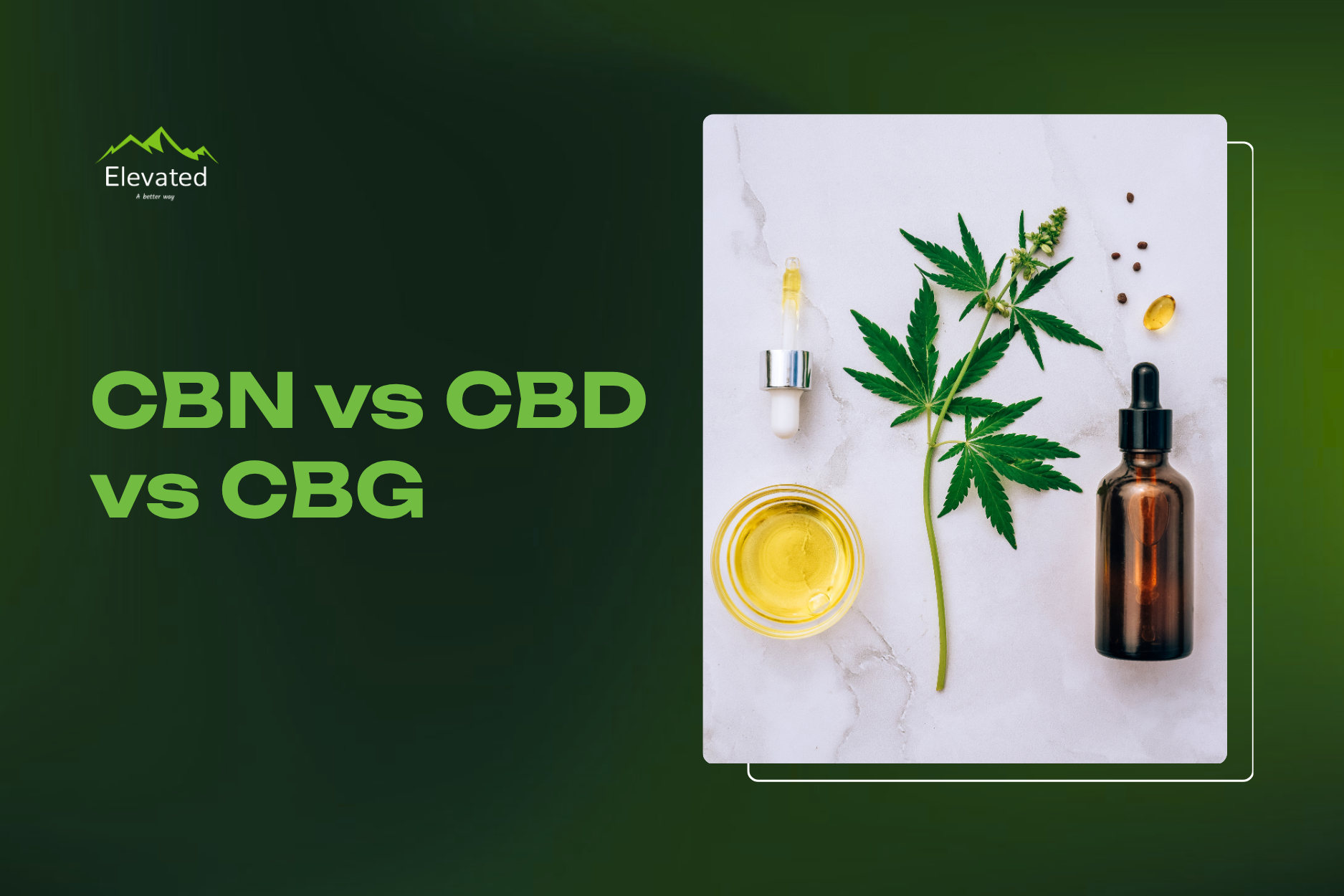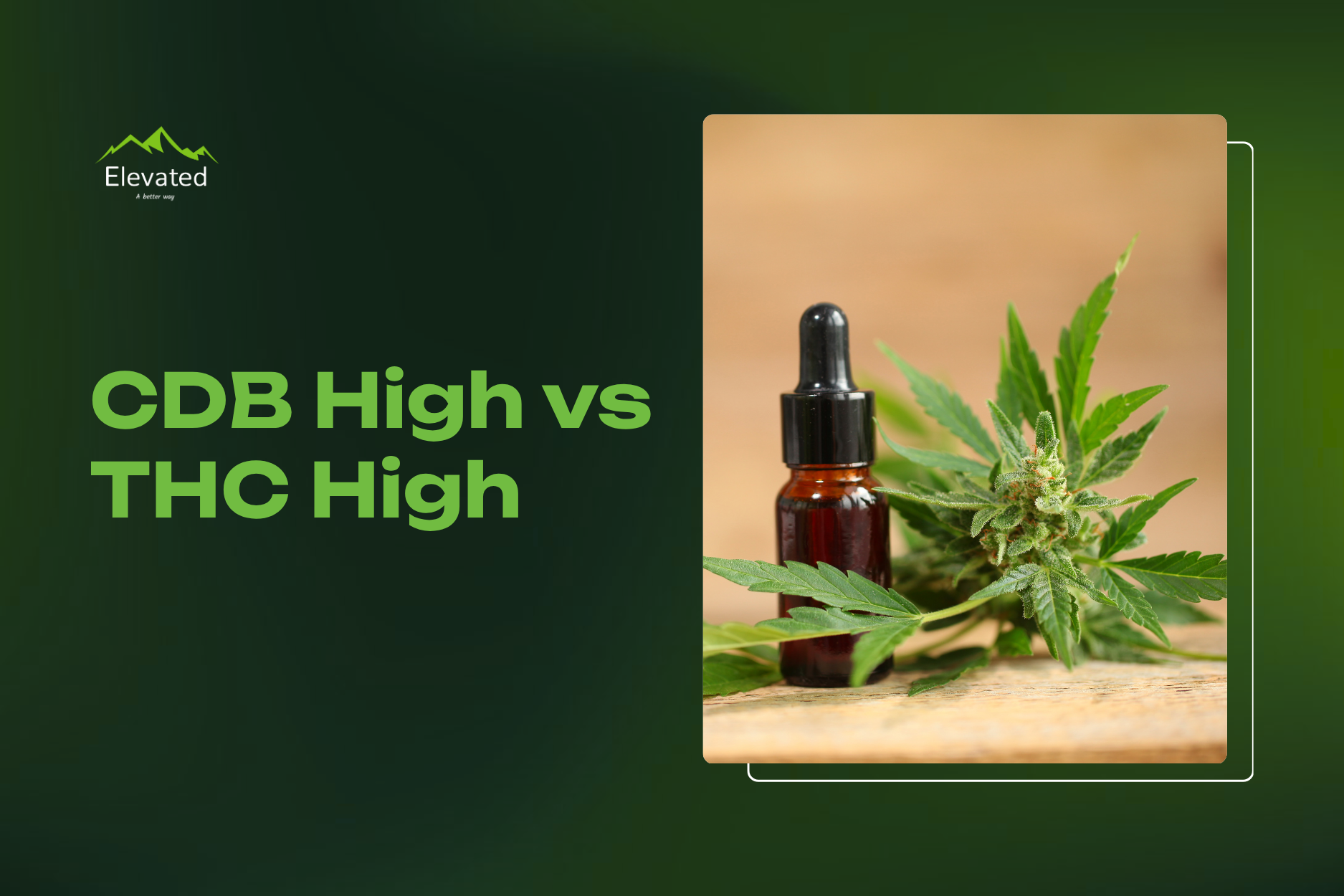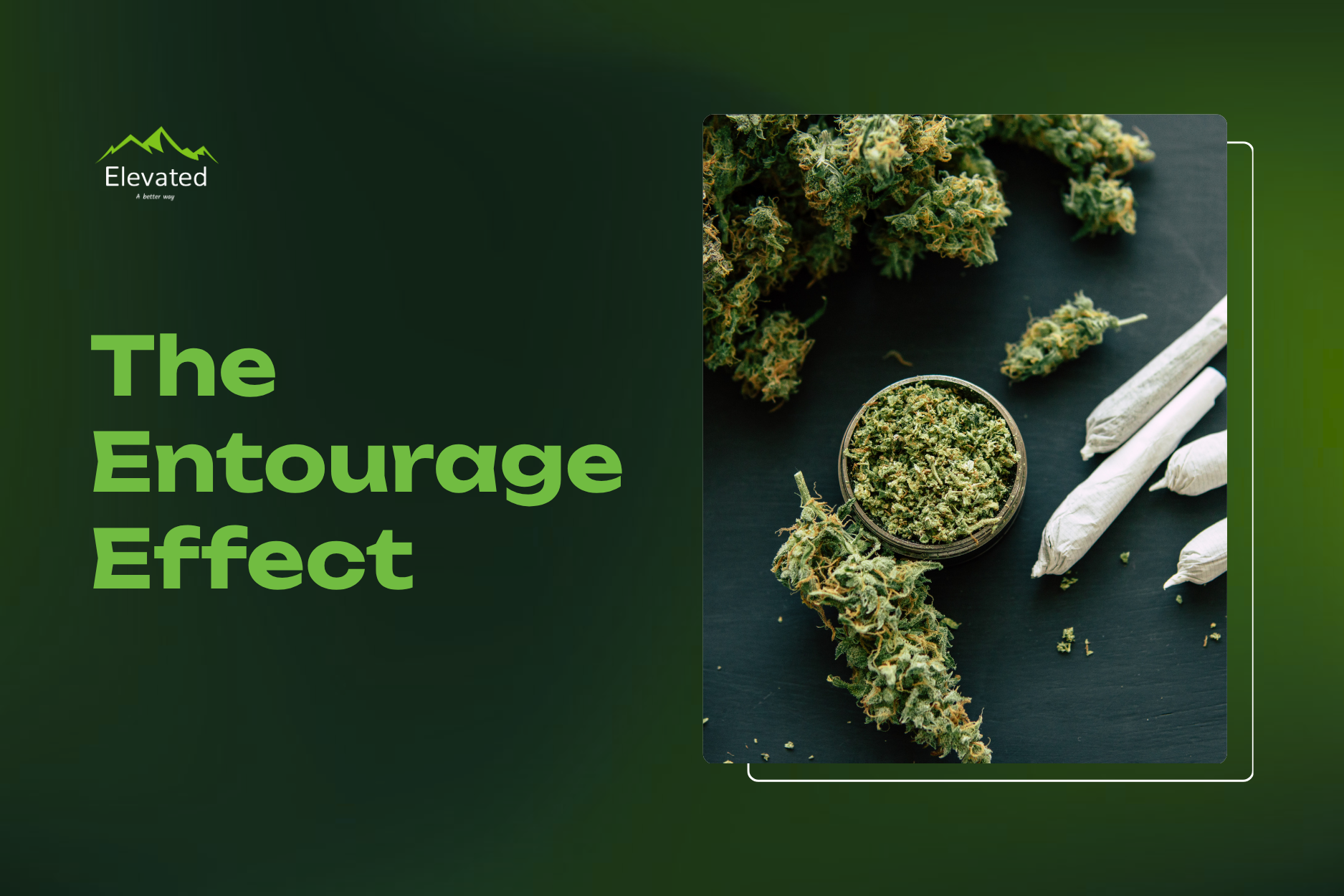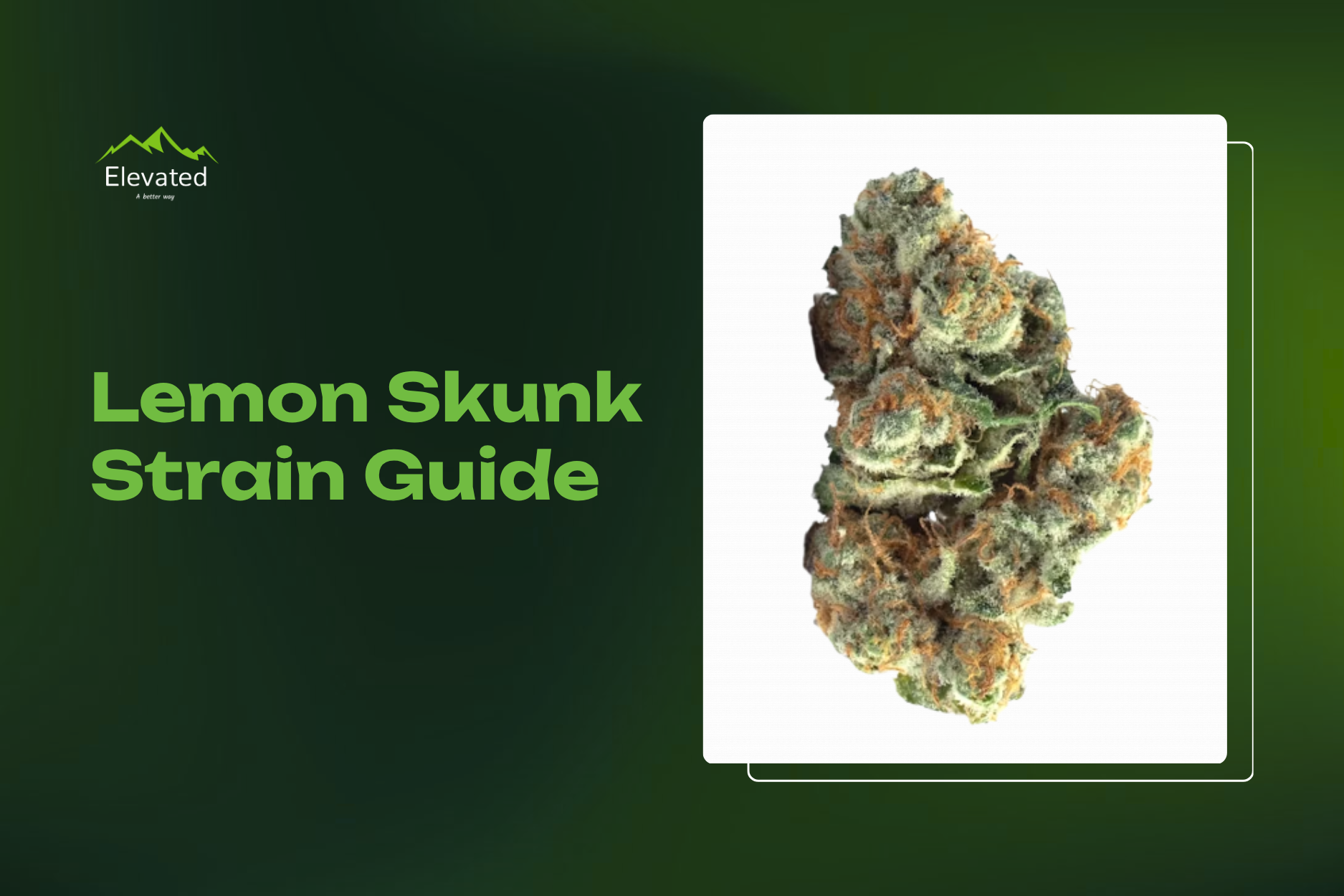CBD Myths Debunked: What You Should Know
CBD is everywhere these days. It shows up in lattes, lotions, vape carts, and wellness blogs that promise instant calm or a miracle cure. What often gets lost in that flood of content is accuracy.
The rapid growth of the cannabis industry has created more information than ever before, but not all of it is grounded in fact. Between social media marketing, word-of-mouth stories, and unclear labeling, the truth can feel buried under repetition.
These are the seven myths that show up most often in Elevated’s shops and online questions:
- CBD gets you high
- More CBD means better results
- All CBD products are the same
- CBD is a miracle cure for everything
- CBD will never appear on a drug test
- Hemp seed oil and CBD oil are identical
- Anything labeled “CBD” is legal and safe everywhere
Each of these ideas has a backstory and a scientific counterpoint. Over the next sections, we will trace how these myths took hold, what current research actually shows, and how Elevated Montana continues to guide customers toward facts, safety, and locally produced quality.
How Cannabis Myths Take Root in the First Place
The CBD conversation didn’t start with science. It started with stigma, half-remembered anecdotes, and decades of prohibition that pushed cannabis knowledge underground. When legalization arrived, the world rushed to catch up, and a flood of mixed messages followed. Today’s confusion about CBD isn’t accidental; it’s the result of cultural shifts, online repetition, and the learning curve of a young industry still defining its language.
The Origins of CBD Folklore
For most of the 20th century, cannabis sat in the same category as narcotics, and public education reflected that.
Decades of “Reefer Madness” messaging lumped every cannabinoid into one villainized group. Research slowed, stigma hardened, and misinformation filled the gaps. When CBD finally reentered the conversation as a non-intoxicating compound, it carried that historical baggage.
The legalization wave flipped the narrative almost overnight. Suddenly, CBD was everywhere, and everyone wanted to explain it. Wellness brands, supplement makers, and online stores each offered their version of what CBD “does.”
Without clear federal guidelines or consistent data, opinion replaced evidence. Early influencers marketed CBD as a cure-all for stress and pain, sometimes without ever using it. That early overconfidence shaped the myths people still repeat today.
How the Internet Made It Worse
The internet turned cannabis talk into a constant loop. TikTok creators post “30-second science” clips that condense complex pharmacology into easy slogans. Reddit threads become echo chambers where one misquoted article multiplies into a dozen new “facts.” Wellness blogs often copy each other’s content word for word, spreading the same unverified claims across thousands of pages.
One of the most persistent online scams involved “Dr. Oz CBD gummies,” a fake endorsement that fooled thousands of buyers. It illustrates how repetition online gives false authority. Once an idea circulates long enough, readers start seeing it as proof instead of marketing.
Legal Shift, a Cultural Shake-Up
Legalization added opportunity and confusion in equal measure. Federal law distinguishes hemp-derived CBD from THC-rich cannabis, but state rules vary widely. A bottle of CBD oil might be legal in Helena and restricted in another state. This patchwork makes it hard for new consumers to know who to trust.
Even legitimate brands struggle to communicate clearly within that maze of regulations. Some overstate benefits to stand out; others simplify science to keep within labeling laws. The result is a marketplace full of good intentions and mixed messages, where Elevated Montana’s fact-based, compliance-driven approach stands out as a reliable guide.
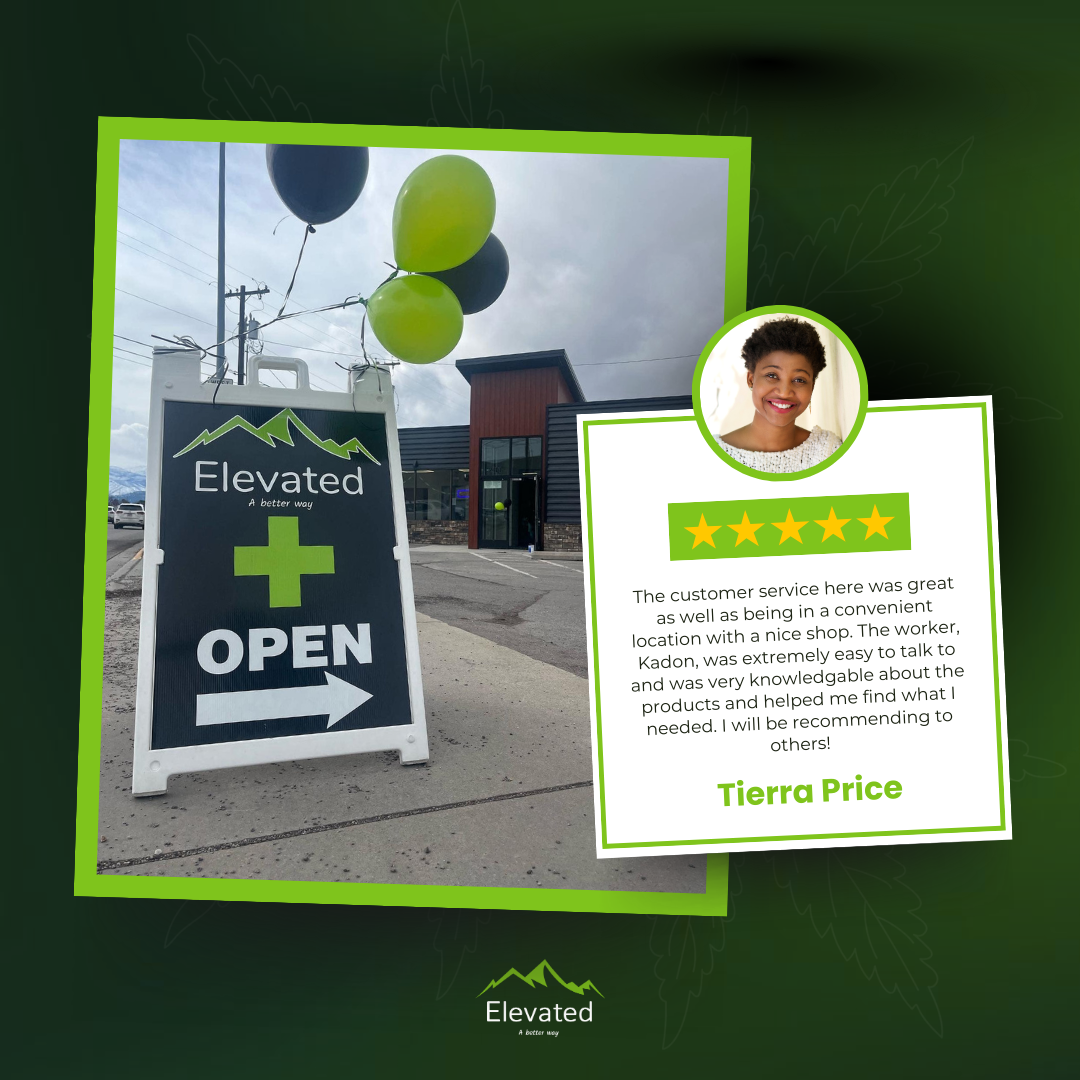
This is paragraph text. Click it or hit the Manage Text button to change the font, color, size, format, and more. To set up site-wide paragraph and title styles, go to Site Theme.
Myth #1 – “CBD Gets You High”
Many people still associate every part of the cannabis plant with intoxication. That assumption traces back to years of viewing cannabis as a single substance rather than a complex family of compounds. CBD and THC come from the same plant, but their effects couldn’t be more different.
The False Belief
For much of the last century, education and policy made no distinction between cannabinoids. Public messaging painted cannabis with one broad brush, and the idea that all forms would impair judgment took root.
Even now, new users often worry that trying CBD might leave them lightheaded or unfocused. This hesitation persists because “psychoactive” and “intoxicating” are often treated as synonyms when they mean very different things.
The Reality
CBD interacts with receptors that help regulate mood and stress, yet it does not create euphoria or distortion of perception. The compound can actually moderate the impact of THC when the two appear together.
A peer-reviewed study in Neuropsychopharmacology found that cannabidiol reduced THC-induced anxiety and psychotic-like symptoms by altering activation in key brain regions.
That scientific finding matches what many experienced consumers report when they use CBD-rich flower alongside high-THC varieties.
The combination supports a smoother, more centered effect while maintaining the qualities people enjoy in traditional cannabis. It can also make products more approachable for those who want relief without mental fog or overstimulation.
Myth #2 – “More CBD Means Better Results”
Big numbers on labels create an easy shortcut. It is tempting to believe that a larger milligram count guarantees stronger effects. CBD does not behave like that. Its value comes from how it interacts with your endocannabinoid system, which favors balance over brute force.
The False Belief
Linear dose thinking leads people to reach for the highest bottle on the shelf. When effects feel subtle, the next move often becomes a large jump in serving size. That habit wastes product and can flatten the very benefits people are seeking.
Cannabinoid signaling relies on homeostasis. Once receptor activity is pushed past a useful range, the system responds with diminishing returns.
The Reality
Cannabidiol frequently follows a bell-shaped response curve. Moderate amounts can outperform both very low and very high doses.
A randomized controlled trial in Frontiers in Pharmacology found that a middle dose of oral CBD produced the strongest reduction in anxiety during a validated public speaking test, while lower and higher doses were less effective.
This pattern emerges because CBD acts at multiple targets. At optimal exposure, receptor signaling aligns with the desired effect. Push the dose too far and countervailing pathways engage, blunting outcomes. That is why some people report their best focus, sleep quality, or stress relief at a modest serving size, then feel little improvement when they scale up.
A practical strategy starts with a low daily amount, holds steady for several days, and adjusts slowly. Keep a simple log of time, dose, and effect so patterns become obvious.
This approach helps you find the smallest dose that delivers the result you want, reduces side effects such as fatigue or stomach upset, and stretches your budget. CBD rewards precision, consistency, and patient titration.
Myth #3 – “All CBD Products Are the Same”
At first glance many tinctures and gummies look interchangeable. Labels repeat familiar terms and milligram counts, which makes it easy to assume identical performance. The reality is more layered. Source material, extraction, composition, and testing all shape how a product feels and functions in the body.
The False Belief
People often expect two bottles with the same listed milligrams to deliver the same result. When one product feels effective and another feels flat, confusion follows. The difference usually traces to what remains in the extract after processing. Some formulas keep a broader set of plant compounds, while others strip everything away except cannabidiol.
The Reality
CBD products typically fall into three groups. Full spectrum includes measurable terpenes and minor cannabinoids alongside CBD. Broad spectrum retains many of those components while removing detectable THC. Isolate contains purified CBD without the surrounding plant matrix.
These formats interact with the endocannabinoid system in distinct ways, which helps explain varied outcomes between brands that list the same dose.
Evidence supports this distinction. In a preclinical model of inflammation, full spectrum CBD-rich extract produced stronger and longer-lasting effects than the same amount of purified CBD, consistent with the concept often called the entourage effect.
Consistency also depends on rigorous verification. Elevated’s product line uses third-party testing to confirm cannabinoid profile, terpene content, and the absence of contaminants, so the label reflects what is in the bottle.
That documentation helps shoppers choose the spectrum that matches their goals, whether they want the broader plant effect of full spectrum or the THC-free assurance of certain broad-spectrum or isolate options.
Montana’s growing conditions add another layer of identity. High-elevation light intensity, cool nights, and careful harvest practices influence terpene ratios and minor cannabinoid levels.
Myth #4 – “CBD Is a Miracle Cure”
CBD’s popularity has created a flood of bold claims. A quick search online turns up promises that it cures pain, erases anxiety, reverses cancer, and solves insomnia in a single drop. These exaggerated statements build unrealistic expectations and distract from what science actually supports: potential benefits, not guaranteed cures.
The False Belief
Because CBD interacts with so many systems in the body, it often gets marketed as an all-purpose remedy. Influencers and online vendors amplify isolated success stories until they sound universal.
The result is a public impression that cannabidiol can replace medical care. This myth leaves consumers vulnerable to disappointment and to unsafe products promoted by unverified sellers.
The Reality
CBD has shown therapeutic promise, but its benefits depend on the condition, the formulation, and the dose. The only FDA-approved CBD medicine treats rare forms of childhood epilepsy, confirming that under specific circumstances cannabidiol can be effective. Outside of that use, evidence remains preliminary.
A systematic review evaluated dozens of studies and concluded that while CBD shows potential for anxiety, inflammation, and sleep disorders, the data are still limited and inconsistent.
This careful conclusion contradicts the “miracle cure” narrative. It highlights the difference between early laboratory results and validated clinical outcomes. Real science progresses slowly, through controlled trials and peer review, not through viral testimonials.
Myth #5 – “CBD Won’t Show Up on a Drug Test”
Many consumers assume that CBD is completely safe for workplace or athletic screenings. The label “THC-free” often reinforces that confidence, suggesting that hemp-derived products carry no risk. In reality, the chemistry behind extraction and the sensitivity of modern drug tests tell a different story.
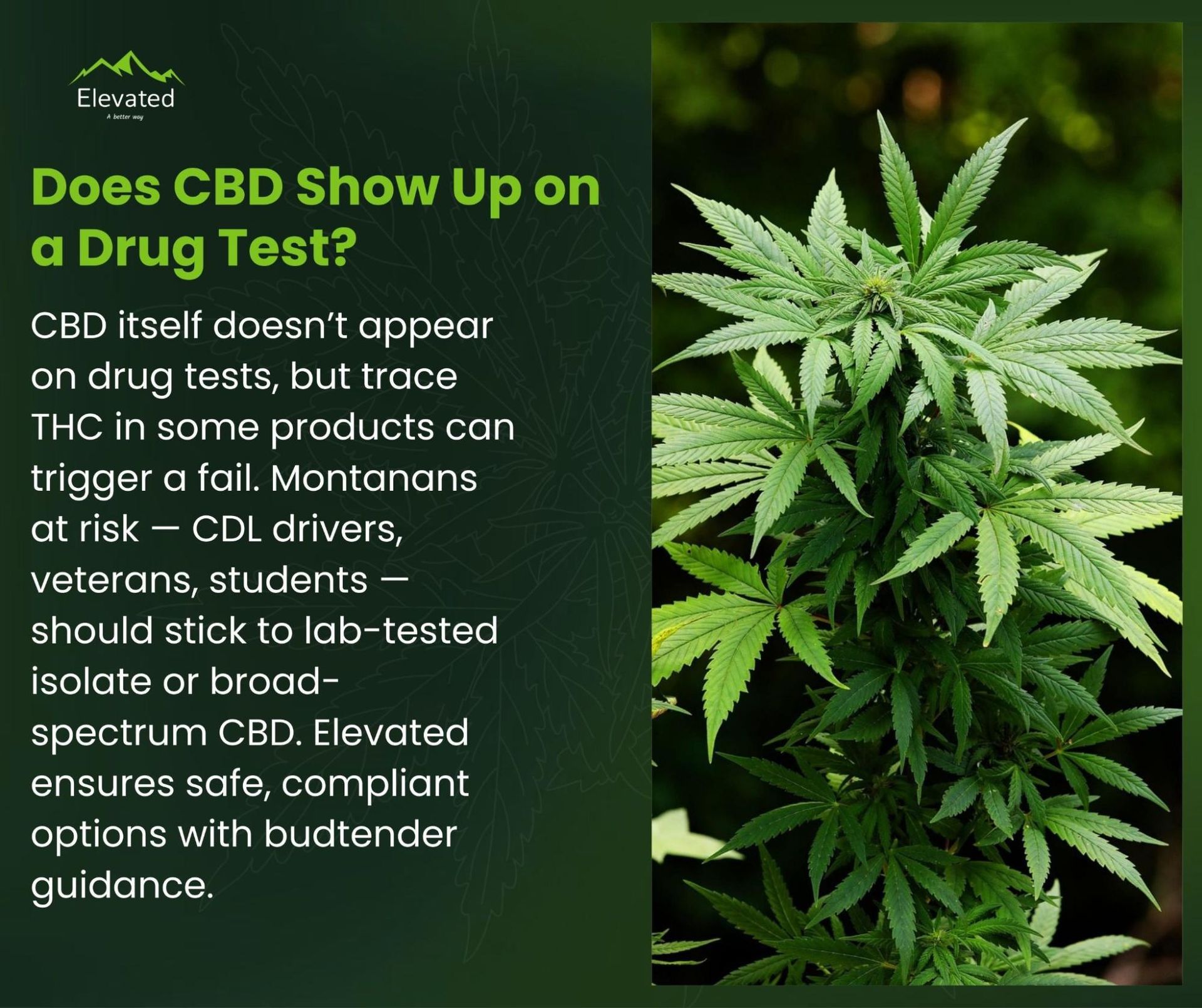
The False Belief
The misconception starts with legal definitions. Federal law allows hemp products to contain up to 0.3 percent THC, which sounds negligible but can still build up in the body over time. Even small, repeated doses from full-spectrum formulas may leave detectable traces.
Mislabeling compounds the issue. Some products marketed as pure CBD have been found to contain measurable THC levels due to poor manufacturing oversight.
This misunderstanding leads to unwelcome surprises for employees, drivers, or athletes who rely on test results to stay compliant. A positive test does not always point to recreational use as it can stem from product variation or inadequate labeling.
The Reality
Scientific research confirms that trace THC exposure from hemp-derived CBD can trigger positive results on standard urine screenings.
A controlled trial published in JAMA Psychiatry monitored participants who consumed full-spectrum CBD daily for four weeks and detected THC metabolites in several urine samples. The study highlights how even legally compliant products may introduce enough THC for detection, depending on dose and duration.
Consumers who undergo regular testing should focus on broad-spectrum or isolate formulations that include verified certificates of analysis from accredited laboratories. A genuine COA lists cannabinoid content and confirms whether THC is present below quantifiable limits.
The safest strategy is simple: trust documentation, not packaging claims. Verified testing is the only way to ensure that a CBD product supports wellness goals without jeopardizing employment or athletic eligibility.
Myth #6 – “Hemp Seed Oil and CBD Oil Are the Same”
Few misconceptions cause more confusion for shoppers than the mix-up between hemp seed oil and CBD oil. The two are often marketed side by side with nearly identical packaging, yet they come from different parts of the plant and serve completely different purposes.
The False Belief
Online marketing blurs the line between these oils, leading many consumers to believe they provide the same results. The term “hemp oil” appears on skincare products, cooking oils, and supplements that contain no cannabinoids at all.
Since both products originate from Cannabis sativa, it is easy to assume that hemp seed oil delivers the same calming or therapeutic effects as CBD. When people use it expecting relaxation or relief, they often feel nothing and assume CBD itself is overhyped.
The Reality
CBD oil is extracted from flowers and leaves where cannabinoids and terpenes are concentrated. Hemp seed oil contains fatty acids and micronutrients, not active cannabidiol. Analytical work confirms this distinction.
A cannabinoid profiling study of hemp seed oil reported only trace cannabinoid signals in seed oils, largely attributed to contact with resinous plant material during harvesting and processing rather than production within the seeds themselves. These levels are far below those found in flower-derived CBD extracts and are not sufficient for typical wellness outcomes associated with CBD.
If the goal is nutrition, hemp seed oil fits well in salads or skincare. If the goal is measurable cannabinoid intake, look for “cannabidiol” on the ingredient list and review a recent certificate of analysis that lists CBD content and verifies the absence or presence of THC.
Myth #7 – “CBD Is Legal and Safe Everywhere”
CBD products are often marketed as if they can be purchased, carried, or used without restrictions. The truth is more complicated.
Legal status changes from one jurisdiction to another, and what seems acceptable in Montana may create problems in an airport or across a state border.
The False Belief
Many people assume that the 2018 Farm Bill legalized all forms of CBD nationwide. Because it removed hemp from the list of controlled substances, consumers believe that any CBD product is federally protected and safe to travel with. The assumption leads travelers to pack CBD oils, vapes, or gummies for interstate trips, expecting no legal issues.
The Reality
Federal law allows hemp-derived CBD that contains less than 0.3 percent THC, but that does not mean all products are treated equally.
The Food and Drug Administration regulates CBD under the Federal Food, Drug, and Cosmetic Act, and its current position is that CBD cannot legally be sold as a dietary supplement or added to food.
State governments have added another layer by enacting their own regulations that may restrict or permit CBD in different forms.
According to the Centers for Disease Control and Prevention, hemp-derived CBD may be legal under federal law, but several states have kept hemp or specific CBD products under controlled-substance rules. This means legality depends on where you are and where you are going.
Travel adds further complexity. The Transportation Security Administration permits hemp-derived CBD that complies with federal standards, yet it also reminds travelers that airport security does not override state cannabis laws. Carrying products between states or onto airplanes can still present a risk if destination laws differ.
Why Buying from a Legal Source Is Imperative
The popularity of CBD has attracted both responsible producers and opportunistic sellers. In a market where products range from carefully tested extracts to counterfeit oils, the difference often comes down to where they were purchased.
Choosing a verified source is not just about quality; it is about safety, accuracy, and accountability.
The Dangers of Unverified Online CBD
Unregulated online marketplaces are flooded with products that look legitimate but fail basic safety standards. Independent testing of random CBD products has found contamination with heavy metals, pesticides, and residual solvents. Some contain unlisted THC that can cause intoxication or trigger a failed drug test, while others include no measurable CBD at all.
The U.S. Food and Drug Administration warns that many CBD items sold online or through social media are mislabeled or adulterated. Promises such as “THC-free,” “doctor approved,” or “miracle results” are often unsupported by any testing data.
Consumers should be cautious of products sold through large online retailers or promoted by influencers that do not provide certificates of analysis from accredited laboratories. Without those documents, there is no way to confirm purity or potency.
How Montana’s Regulated Market Protects You
Montana’s cannabis regulations create a structured system that prioritizes safety and transparency. Licensed dispensaries operate under state oversight, which requires every product to be tested by independent laboratories for potency, contaminants, and accurate labeling. Tracking from cultivation to sale prevents substitution and ensures traceability.
Publicly available lab reports let customers see the cannabinoid profile, terpene content, and test results before purchasing. This transparency builds trust and supports consistent quality across batches. Local cultivation also means shorter supply chains, fresher products, and stronger accountability between growers and consumers.
Elevated Montana: Your Safe, Local Source
Elevated sources and produces cannabis entirely within Montana, maintaining control from cultivation through final packaging. The company’s in-house bakery ensures precise dosing for edibles and compliance with state testing requirements. Budtenders focus on education rather than upselling, helping each customer find the right balance of CBD and THC products.
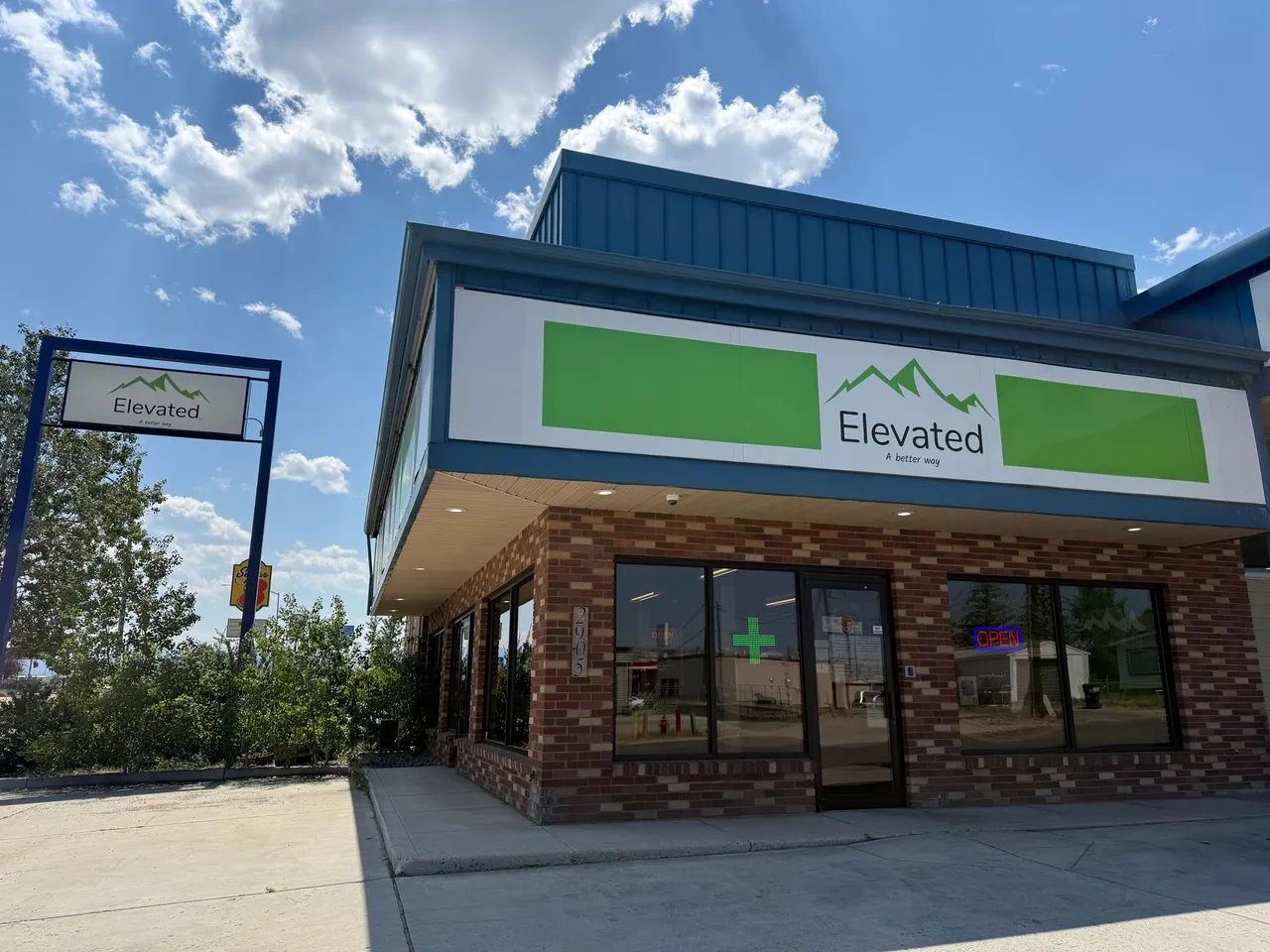
Elevated also supports accessibility through veteran and tribal ID discounts and a variety of product types:
- CBD line featuring oils, tinctures, and gummies with verified certificates of analysis
- THC flower grown in Montana’s clean climate for balanced terpene profiles
- Pre-rolls designed for steady, moderate experiences
- Edibles made in small batches for consistency and safety
Buying from a licensed source ensures the product in your hand matches what the label promises, delivering both peace of mind and authentic quality.
From Myth to Mindful Choice
Hopefully, this helps clear up some of the most common misunderstandings about CBD. If you still have questions or want to learn more about how CBD might fit into your routine, talk with a budtender at your local Elevated Montana dispensary. Our team is always happy to explain lab results, dosing options, and the difference between various product types so you can make informed choices that fit your goals.
The goal is to move cannabis from the realm of urban legend into a scientifically grounded space where claims are supported by evidence. That shift takes time, making it even more important to have trusted, transparent sources along the way.
When you visit Elevated Montana, you can count on knowledgeable guidance, verified products, and honest education, because we believe the best experiences come from understanding what’s in your product and how it works for you.
Disclaimer
The information provided in this article is for educational purposes only and should not be taken as medical advice. CBD and THC products affect individuals differently, and results can vary based on dosage, body chemistry, and product formulation. Always consult a qualified healthcare professional before using cannabis products, especially if you are pregnant, nursing, have a medical condition, or are taking prescription medications.
References
Zuardi, A. W., Rodrigues, N. P., Silva, A. L., Bernardo, S. A., Hallak, J. E. C., Guimarães, F. S., & Crippa, J. A. S. (2017). Inverted U-shaped dose–response curve of the anxiolytic effect of cannabidiol during public speaking in real-life patients with social anxiety disorder. Frontiers in Pharmacology, 8, 259.
Gallily, R., Yekhtin, Z., & Hanuš, L. O. (2015). Overcoming the bell-shaped dose–response of cannabidiol by using cannabis extract enriched in cannabidiol. Pharmacology & Pharmacy, 6(2), 75–85.
Iffland, K., & Grotenhermen, F. (2017). An update on safety and side effects of cannabidiol: A review of clinical data and relevant animal studies. Cannabis and Cannabinoid Research, 2(1), 139–154.
Lachenmeier, D. W., Rajcic de Rezende, T., & Habel, S. (2019). Cannabinoid content of cannabis seed oil and hemp seed oil products. Frontiers in Plant Science, 10, 120.
Spindle, T. R., Cone, E. J., Kuntz, D., Mitchell, J. M., Bigelow, G. E., Flegel, R., & Vandrey, R. (2020). Urinary tetrahydrocannabinol after 4 weeks of a full-spectrum, hemp-derived CBD product: A case series. JAMA Psychiatry, 78(1), 88–90.
U.S. Food and Drug Administration. (2023, May 4). What you need to know (and what we’re working to find out) about products containing cannabis or cannabis-derived compounds, including CBD. U.S. Department of Health and Human Services.
Centers for Disease Control and Prevention. (2024, February 22). About cannabidiol (CBD). U.S. Department of Health and Human Services.
